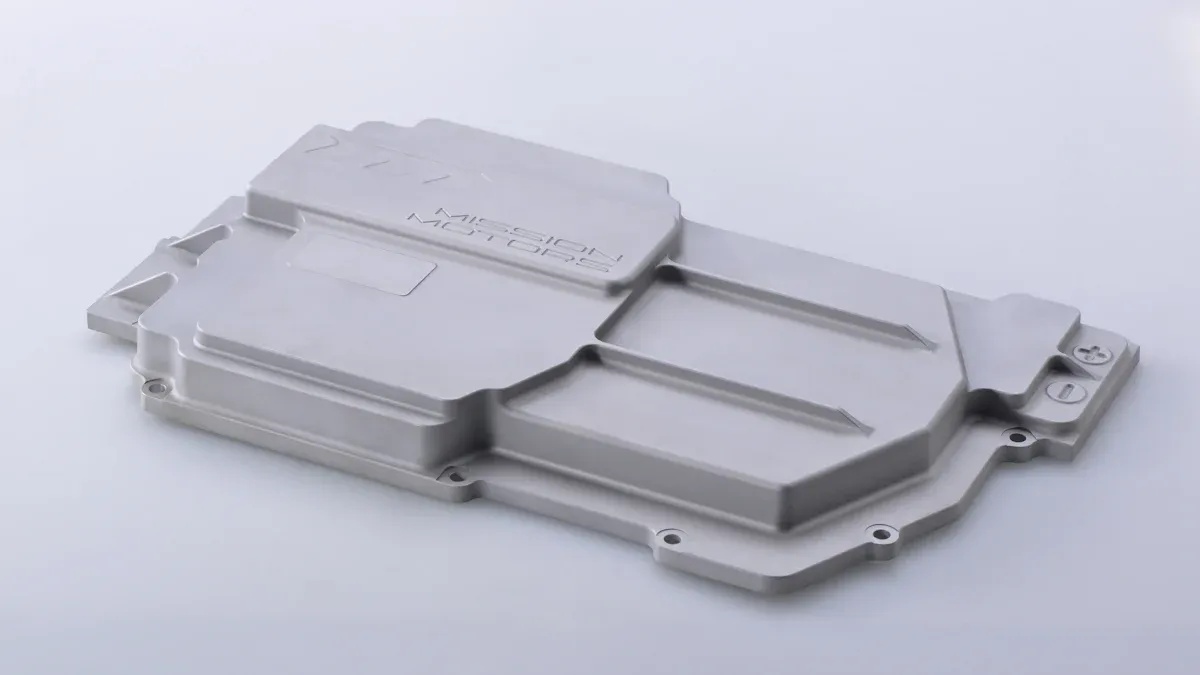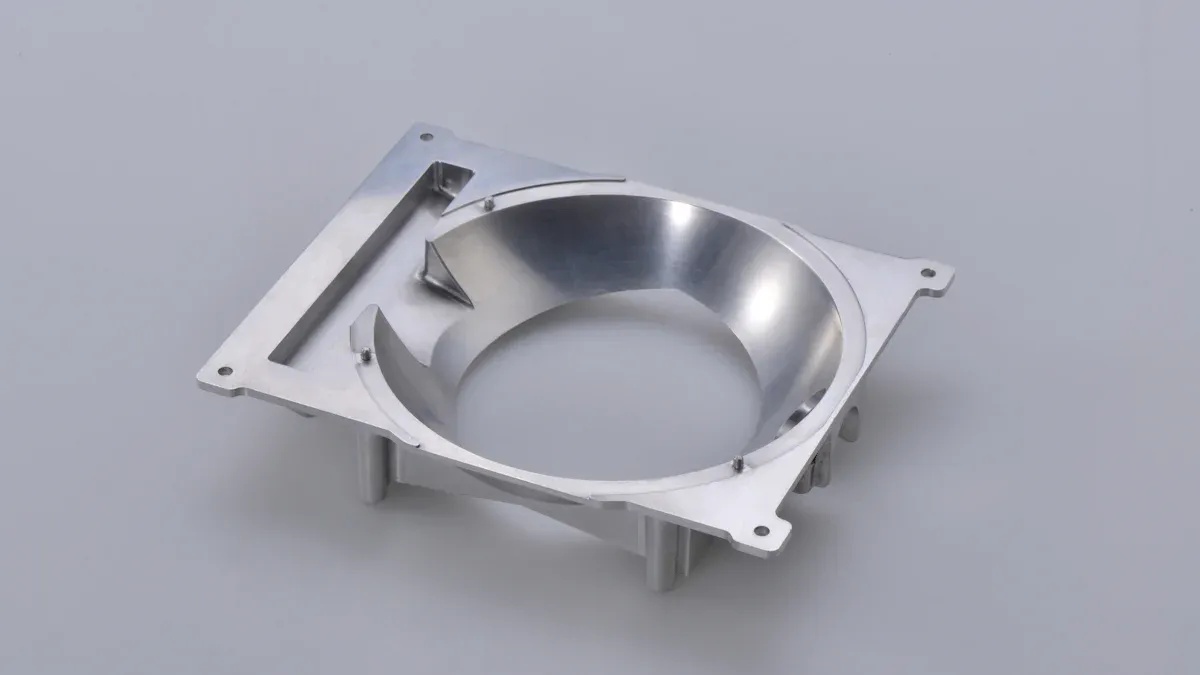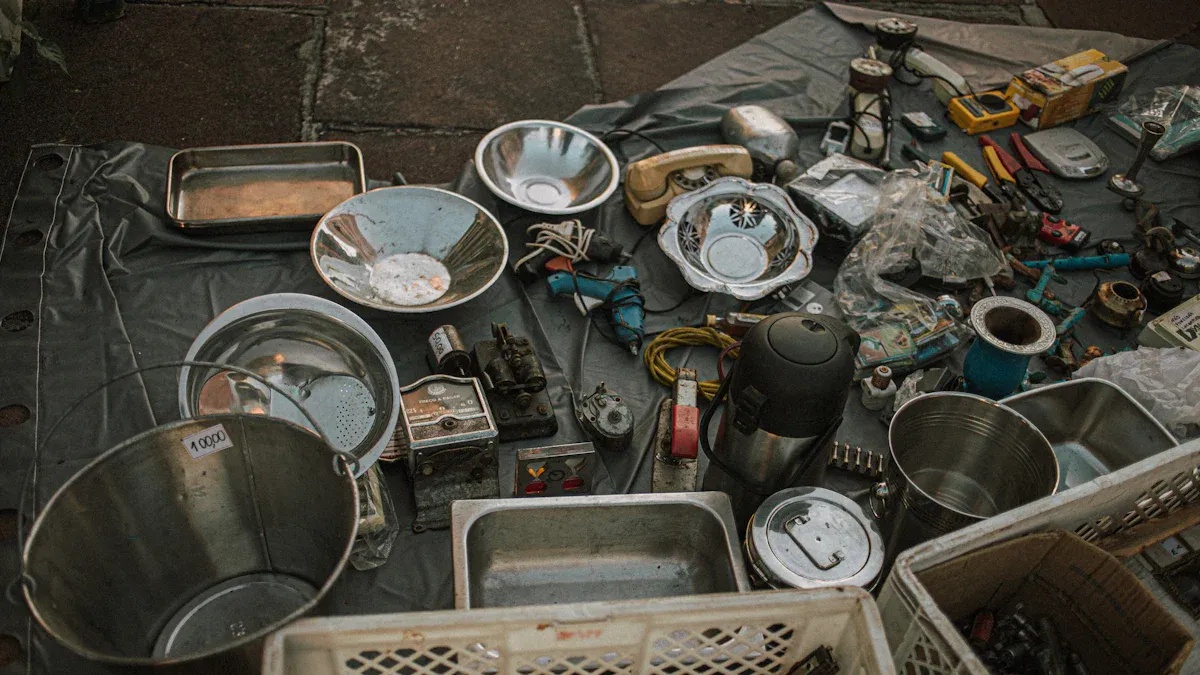5 Cast Aluminum Die Casting Solutions for Better Results
You face several challenges in cast aluminum die casting, including energy-intensive production and sector limitations. Manufacturers of pipe fittings and machine tools often seek better ways to boost product quality and cut costs.
| Challenge | Description |
|---|---|
| Energy-intensive production process | High electricity and fuel use raises costs and complicates compliance. |
| Limited adoption in certain sectors | Regulatory constraints restrict die casting in medical and aerospace applications. |
Key Takeaways
- Advanced mold design enhances durability and performance. Use innovative materials and thermal control to create longer-lasting molds.
- Selecting the right aluminum alloy is crucial. Match alloys to application needs to improve strength and durability.
- Implement real-time monitoring for temperature and pressure. This helps maintain quality and reduces defects during production.
Cast Aluminum Advanced Mold Design
Innovative Mold Engineering
You can achieve better results in cast aluminum die casting by focusing on advanced mold design. Recent innovations have transformed how you approach mold engineering. The latest advancements include new materials, improved thermal control, and the use of additive manufacturing. These changes help you create molds that last longer and perform better.
| Advancement Type | Description |
|---|---|
| Material Selection | New materials enhance heat resilience, thermal conductivity, and wear resistance, improving mold life. |
| Innovations in Thermal Control | Superior thermal conductivity materials achieve uniform cooling, reducing defects in finished products. |
| Wear-Resistant Coatings | Advanced coatings like diamond-like carbon increase durability and reduce maintenance needs. |
| Integration of Additive Manufacturing | 3D printing allows for complex geometries, improving casting precision and reducing material waste. |
You can use innovative steel types, such as 1.2383, to speed up solidification and increase yield. Engineers now fine-tune mold designs and process parameters in virtual environments. Conformal cooling reduces cycle times by up to 40%, which boosts productivity and improves part quality.
Reducing Casting Defects
Advanced mold design helps you minimize common casting defects in cast aluminum parts. You often face issues like porosity, shrinkage, cold shuts, misruns, and warping. By optimizing mold flow channels and venting, you allow gases to escape and reduce turbulence. Choosing the right mold materials improves heat conduction and solidification rates.
- 3D sand-printing technology enables complex gating systems, which can reduce casting defects by up to 99.5%.
- Oxide inclusions decrease by 35%, and mechanical strength improves by over 8%.
- Proper mold maintenance and design prevent sharp corners and complex paths that disrupt metal flow.
You save costs by reducing material waste and production time. Lean manufacturing and automation further enhance efficiency. When you implement these strategies, you produce high-quality cast aluminum parts with fewer rejects.
Cast Aluminum Optimized Alloy Selection
Matching Alloys to Application Needs
You need to choose the right aluminum alloy for each die casting project. This decision affects how your parts perform and how long they last. Different alloys offer unique properties, so you must match them to your application’s needs.
| Category | Criteria | Description |
|---|---|---|
| Casting Process | Hot Cracking | Risk of cracks during solidification. |
| Casting Process | Die Soldering | Tendency to stick to die walls, making ejection harder. |
| Final Product | Corrosion Resistance | Ability to resist damage from the environment. |
| Final Product | Wear Resistance | Strength to handle friction and repeated use. |
| Final Product | Surface Treatments & Machinability | How easily you can finish and shape the part. |
Popular alloys include A360, A380, A383, B390, A413, and 518. For example, A380 works well for automotive parts because it resists hot cracking and has good strength. A360 is best for parts that need to handle high pressure and corrosion, such as marine equipment.
Tip: Always review your customer’s requirements and the real-world stresses your part will face. This helps you avoid problems like porosity or weak mechanical performance.
Enhancing Performance and Durability
Selecting the right alloy boosts both performance and durability. If you use the wrong grade, you may see defects or short product life. When you pick the correct alloy and ensure high purity, your parts last longer and work better.
- Choosing the right material gives your parts the strength they need.
- Meeting industry standards ensures your products stay reliable over time.
- Examining customer specifications helps you understand what your parts must handle.
Design also plays a role. Keeping wall thickness between 2–4 mm prevents porosity and shrinkage. Adding ribs and rounded corners increases strength and improves metal flow. Studies show that using machine learning to predict alloy composition can raise ultimate tensile strength, with models reaching high accuracy.
| Alloy Type | Mechanical Properties | Corrosion Resistance | Processability | Long-term Performance Implications |
|---|---|---|---|---|
| Standard Alloys | Moderate | Good | High | May not meet high strength needs |
| Optimized Alloys | High | Excellent | Moderate | Better for demanding jobs, longer-lasting parts |
You get better results when you select alloys based on your application’s needs. This approach leads to stronger, more reliable cast aluminum components.
Cast Aluminum Precision Process Control
Managing Temperature and Pressure
You can achieve high-quality results in cast aluminum die casting by controlling temperature and pressure with precision. Sensors and real-time monitoring systems help you track these parameters during production. When you use advanced process control technologies, you make quick adjustments to keep the process stable. Simulation tools like CFD and FEA let you predict how molten metal will behave, so you can avoid common defects.
| Technology | Description |
|---|---|
| Advanced Process Control | Sensors provide real-time data on temperature, pressure, and velocity for immediate adjustments. |
| Sensor Technology | High-temperature sensors deliver accurate data in harsh environments. |
| Real-time Monitoring Systems | Continuous oversight detects anomalies and enables fast corrective actions. |
| Simulation Tools | CFD and FEA optimize designs and predict metal flow, reducing scrap and energy use. |
You need to manage several key parameters to improve casting quality:
| Parameter | Effect on Quality |
|---|---|
| Molten Metal Temperature | Controls flow; too high causes gas entrapment, too low leads to incomplete fills. |
| Mold Temperature | Regulates cooling; uneven temperatures cause warpage. |
| Injection Pressure | Higher pressure reduces voids but may cause flash or mold wear. |
| Holding Pressure | More pressure means fewer voids. |
| Cooling Rate | Influences microstructure and strength. |
Real-time monitoring of temperature and pressure during aluminum die casting enhances process control and quality assurance. It allows you to detect defects caused by low alloy temperatures, such as cold shuts or incomplete filling. Pressure readings help you estimate casting density, giving you critical insights into the process.
Improving Consistency and Reducing Waste
You can improve consistency and reduce waste by using dynamic temperature controllers and integrated cooling systems. These tools help you keep the process stable and prevent defects. Sensors collect real-time data, so you can adjust settings quickly. You also benefit from simulation software that predicts problems before they happen.
- Emissions decrease when you use cleaner production techniques and advanced filtration systems.
- Energy consumption drops with energy-efficient technologies and renewable sources.
- Waste management improves when you recycle metal scraps and use closed-loop systems.
Manufacturers overcome challenges like porosity, cold shut defects, and surface flaws by optimizing die design, controlling cooling rates, and using vacuum die-casting for critical parts. Regular maintenance and inspection keep molds in good condition. When you focus on process control, you produce cast aluminum parts with reliable quality and less waste.
Cast Aluminum Automated Quality Inspection
Integrating Inspection Systems
You can improve your inspection process by integrating automated systems into your production line. These systems use advanced technologies like neural networks, deep learning, and real-time monitoring to check each part for defects. Automated inspection reduces contact with molten metal and high temperatures, keeping your workers safe. You eliminate repetitive tasks and heavy lifting, which increases efficiency.
| Benefit | Description |
|---|---|
| Real-time defect detection | Automated systems can identify defects as they occur, ensuring immediate corrective actions. |
| Improved precision | High precision in measuring dimensional accuracy and assessing material properties. |
| Integration of machine learning | Allows for the detection of hidden damages and impurities, enhancing overall quality control. |
| Reduction of waste and rework | Ensures only compliant components move forward, minimizing material waste and production costs. |
You see consistent results in quality inspection. Faster cycle times lead to increased productivity. Automated systems also reduce waste, saving costs on materials and cleanup. Technologies like X-ray image analysis, laser profilometry, and robotic inspection systems help you detect internal and surface defects quickly.
Minimizing Human Error
Automated quality inspection helps you minimize human error in your Cast Aluminum production. AI systems analyze thousands of images per minute, finding small defects that human inspectors might miss. These systems operate without fatigue, so you get reliable and accurate results every time. Advanced vision inspection systems perform real-time, non-destructive testing and catch issues invisible to the human eye.
- You manufacture products free of non-conformities.
- You eliminate waste from quality defects and overproduction.
- You react quickly to any loss of stability in your manufacturing process.
Automated systems monitor and control factors like temperature, injection speed, and cooling time. You achieve consistent quality and meet tolerance requirements. Automation is crucial for producing high-quality parts and reducing the risk of errors.
Cast Aluminum Sustainable Practices
Recycling Aluminum Materials
You can make your production more sustainable by recycling aluminum materials. Recycling aluminum uses much less energy than making new metal. You save money because you need fewer raw materials. Secondary aluminum alloys work as well as primary ones, so you do not lose quality. When you recycle, you help reduce carbon emissions. For every kilogram of recycled aluminum, you release only 0.6 kg of CO2, compared to 12 kg for new aluminum. Raising the recycling rate by just 1% can lower the carbon footprint by 80 kg of CO2 for every 1,000 kg produced.
- Recycling aluminum is cost-effective and energy-efficient.
- Over half of new aluminum production in the U.S. comes from recycled sources.
- You help conserve resources and protect the environment.
Energy-Efficient Production Methods
You can improve sustainability by using energy-efficient production methods. Die casting uses reusable dies, which lowers energy use compared to sand molds. Automated high-pressure die-casting reduces cycle times and increases precision. Vacuum die casting cuts energy use and material waste. IoT-enabled systems let you monitor operations in real time, so you can make quick changes to boost efficiency.
| Energy-Efficient Method | Benefits |
|---|---|
| Automated High-Pressure Die-Casting | Reduces cycle times, ideal for high-volume production, enhances precision |
| Vacuum Die Casting | Lowers energy usage, reduces material waste, aligns with sustainability goals |
| IoT-Enabled Systems | Enables real-time analytics, improves efficiency |
You can also follow standards like ISO 14001:2015 to show your commitment to environmental management. These certifications help you build trust with customers and meet global sustainability goals.
You can achieve better results by using five Cast Aluminum die casting solutions. These strategies help you improve product quality, lower costs, and boost efficiency. Industry reports show that design enhancements increase reliability in fuel cell systems. Market analysis highlights strong mechanical properties in transportation and construction. Automotive trends reveal major investments in lightweight and electric vehicles.
- Design improvements raise reliability and performance.
- Aluminum die castings offer strength and corrosion resistance.
- Investments support new energy vehicle production.
FAQ
What is the main benefit of using automated quality inspection in die casting?
You get faster, more accurate defect detection. Automated systems help you reduce waste and improve product consistency.
How does alloy selection affect the final product?
You choose the right alloy to match your product’s needs. This decision improves strength, durability, and resistance to corrosion.
Can you recycle aluminum scrap from the die casting process?
- Yes, you can recycle aluminum scrap. Recycling saves energy, lowers costs, and helps protect the environment.


